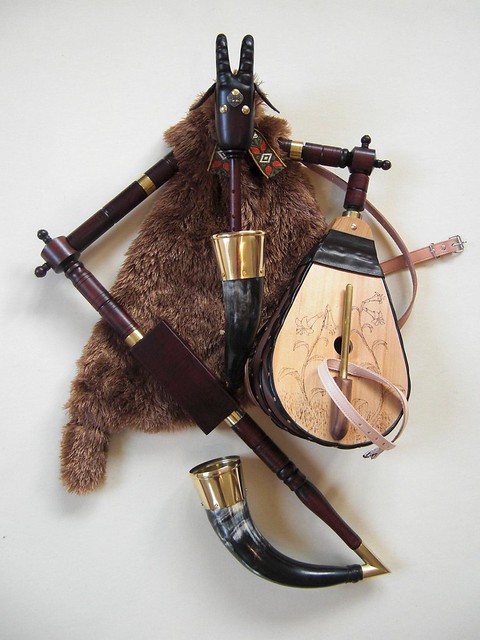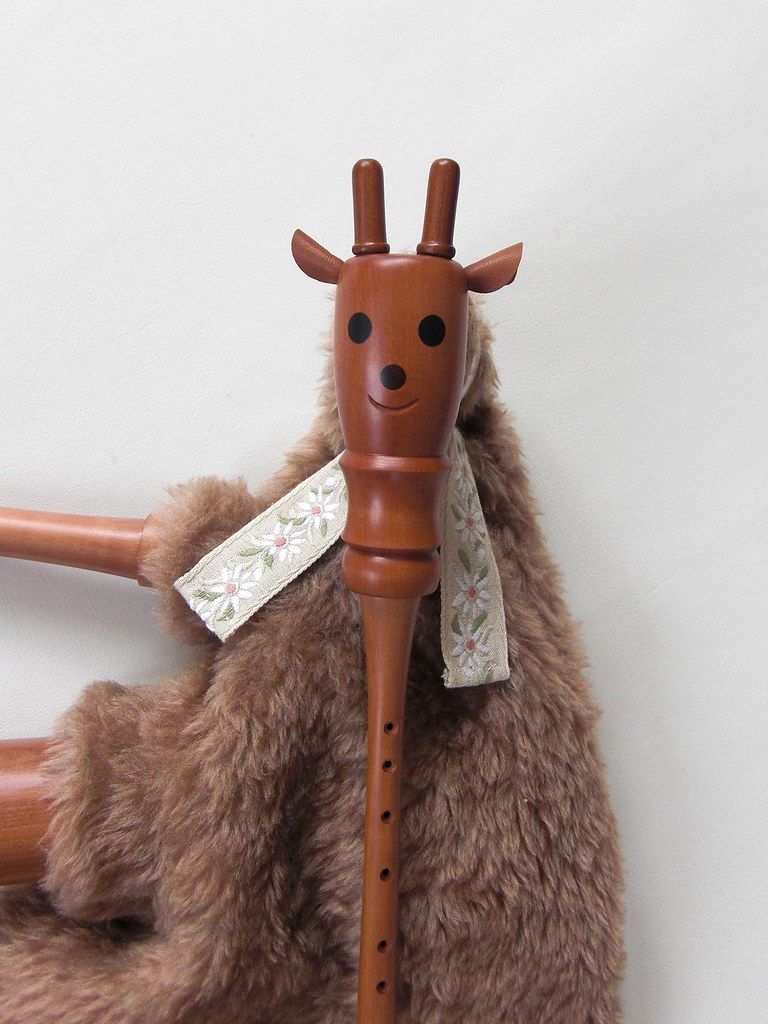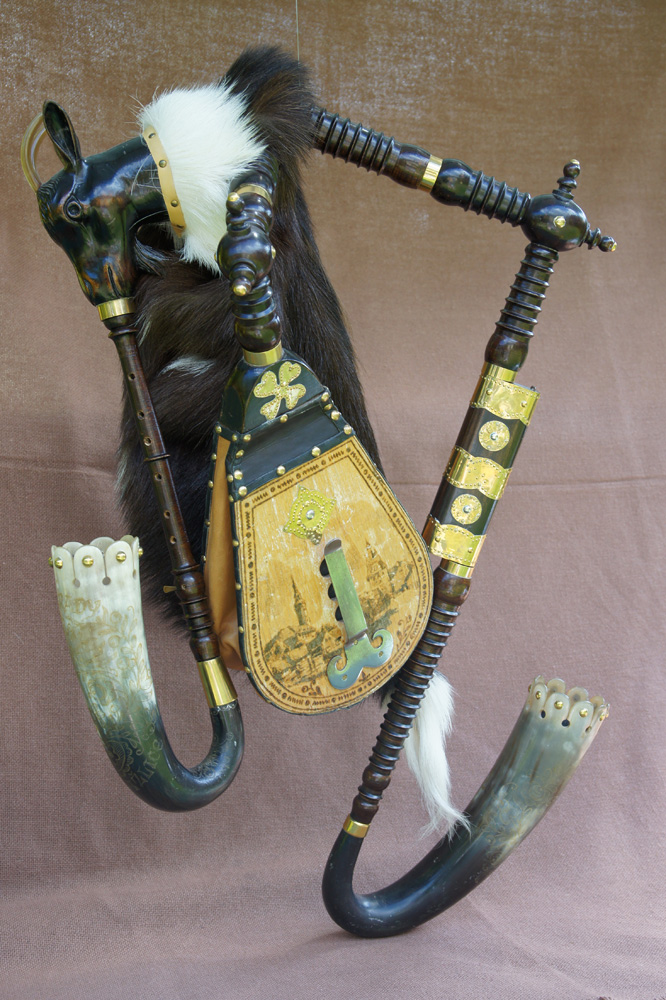Bock (bagpipe)
The buck is a form of bagpipe.
Description
The buck usually has a drone two octaves below the fundamental. The individually executed drone and chanter have a cylindrical bore and a simple tube sheet for sound generation. Most of the air bag of fur is made or covered with such, running the windcap the chanter in the form of a goat head. The air supply is today generally means bellows, which has the advantage that it can be sung by the players simultaneously. Blown goats were played in Bohemia and neighboring Chebsko but until the twentieth century.
At the ends of the pipes upward falls from horn and brass are most appropriate. The chanter is traditionally diatonic and has a range of the fifth below the tonic to sixth on the sixth among the leading tone is generally lacking, except for the Sorbian and related western Polish goats; it is traditionally always played in the major. The drone is attached at the " Bohemian " trestle over a right-angled connection to the air bag, thus it projects over the player's shoulder down. When " egerländischen " Bock the drone hangs straight down in front of the player or can be placed in a sitting position on his legs.
Usual moods are today in Bohemia There, in Bavaria, Austria and the sorbent Country F, in Moravia G and D. Mostly with the instruments in egerländischer design High moods from B to high There encountered. The drone has the Bohemian Bock from the mood F and deeper normally limited to one Rohrverkürzer.
Dissemination
- Bucks in 1800
The buck was widespread until the nineteenth century in parts of Central Europe and is now played mainly in the Czech Republic, especially in southern Bohemia. The last supported by the German-speaking bagpipe culture lasted until the late 1990s in the Czech expatriate community Puhoi in New Zealand and is now carried on by English-speaking New Zealanders. As part of a revival of the instrument there again today numerous players in Bavaria and Austria.
Similar bagpipes forms are available in Slovakia, Poland, Hungary, Croatia and the Sorbs in Lusatia.
The Czech word for " bagpipe " is dudy ( f pl, . Dud Old Church Slavonic "blow" ), of which the German word derives bagpipes. Already Michael Praetorius Syntagma Musicum performs in his a claim referred to as Big Bock bagpipe, which is equipped with the characteristic horns. The term buck standing in a row with names of bagpipes forms from other regions of Europe, all of which have the word meaning goat or similar: Gaita, Cabrette and Chabrette. This is due to the fact that even today, the air bag is usually made from the bladder of a goat or is coated with a goat skin. Another popular material for this was and is dog fur.










